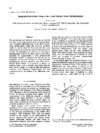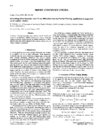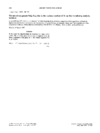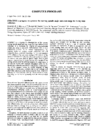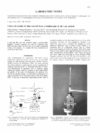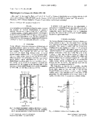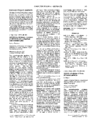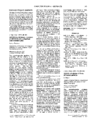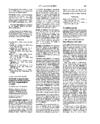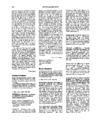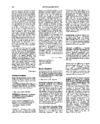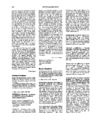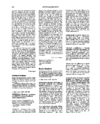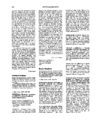issue contents
October 1997 issue

Cover illustration: A crystal of the protein phosphorylase b flash-cooled to 100 K in a 1 mm-diameter mohair loop prior to collection of X-ray diffraction data. Courtesy of Elspeth Garman and Stephen Lee, University of Oxford.
research papers
This study presents a comparison of the half-crystal energy calculated from structural data to the enthalpy of sublimation of some simple molecules such as normal octadecane, hexanedioic acid, diphenylmethanone, anthracene and a more complicated molecule: diuron [3-(3,4-dichlorophenyl)-1-1-dimethylurea].
The geometrical and resolution corrections are derived that occur in the measurement of the integrated intensities of surface diffraction rods for the case of a six-circle diffractometer.
short communications
A Wiener filtering algorithm was used to smooth broad and noisy X-ray diffraction (XRD) patterns from highly dispersed catalysts with low metal loading. It enabled extraction of XRD patterns from the active phases of the catalysts interpretable in terms of phase composition.
A probabilistic measure of structural similarity is proposed that takes into account the degree of spatial localization of atoms expressed in atomic displacement parameters.
Correction to J. Appl. Cryst. (1997). 30, 427-430.
computer programs
A program for the determination of the optimal starting spindle angle and scan range for X-ray diffraction data collection is presented.
laboratory notes
A low-cost flow cell has been designed. This is suitable for time-resolved Laue crystallography.
A furnace able to reach 1123 K with a low-temperature gradient has been developed. It is designed to work on a curved CPS 120 detector with a transmission geometry.
A new approach is presented to controlling the water vaporization rate using a vacuum pump to lower the pressure during the protein crystallization process. The successful application of the method for crystallization of adrenodoxin is described.
fast communications
Powder diffraction intensities are almost always affected by texture (preferred orientation) and overlapping of the maxima, which make phase analysis or ab initio structure solution and refinement difficult or even impossible. An attempt at partial elimination of the problem of overlapping reflections using texture as an intensity-separating `device' is described.
computer program abstracts
A version of ORTEP-III with a Graphical User Interface is presented.
A program that allows one to calculate the diffraction patterns for various X-ray diffraction techniques is presented.
A program for interactive real-space refinement with stereo- chemical restraints for use during model-building is presented.
A program that demonstrates Fourier synthesis and other crystallographic concepts is presented.
crystallographers
Free 

software reviews
Free 

ORTEP-3, reviewed by C. Barnes.
books received
Free 

Free 

Free 

Free 

Free 

Free 



 journal menu
journal menu










